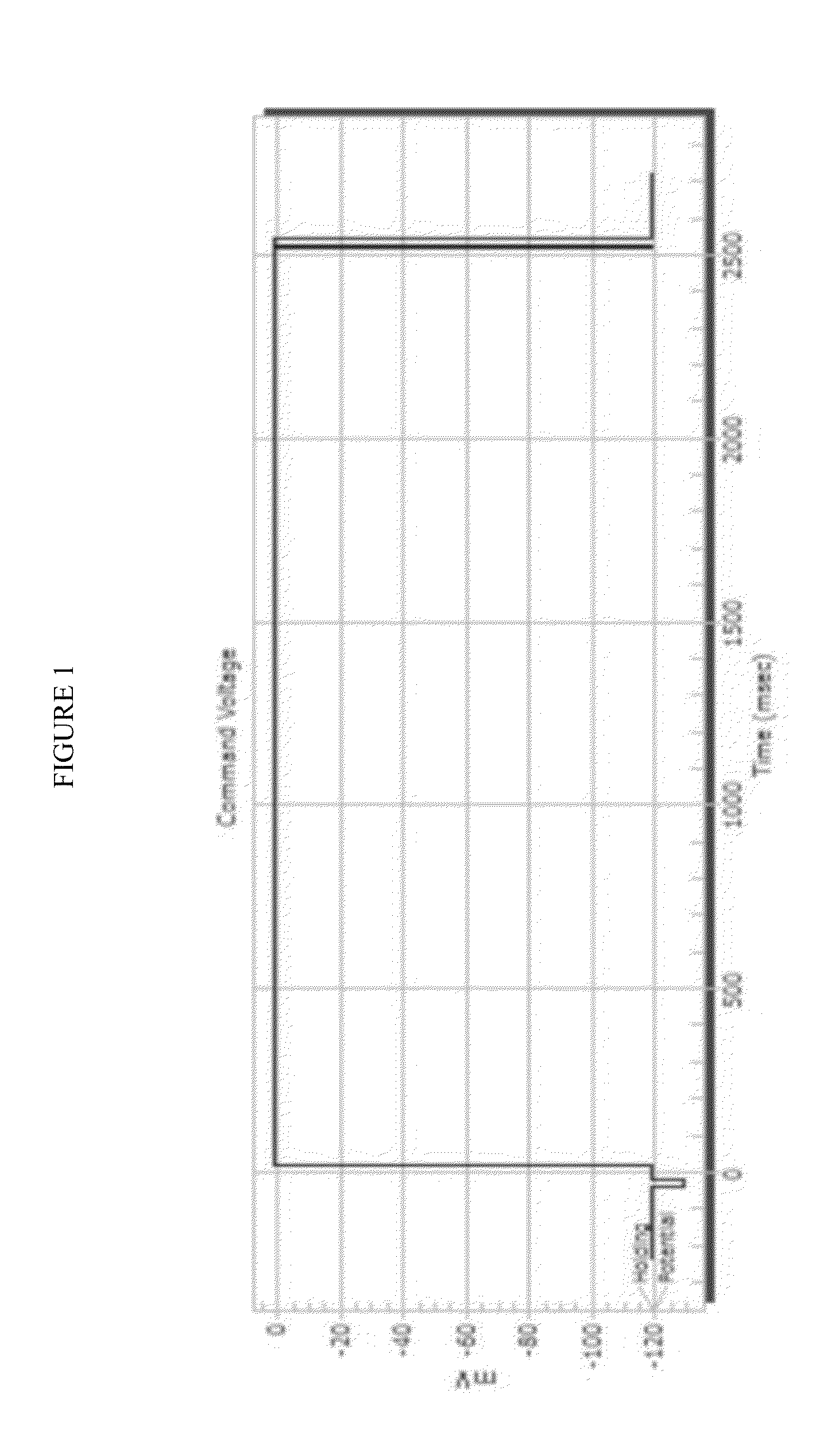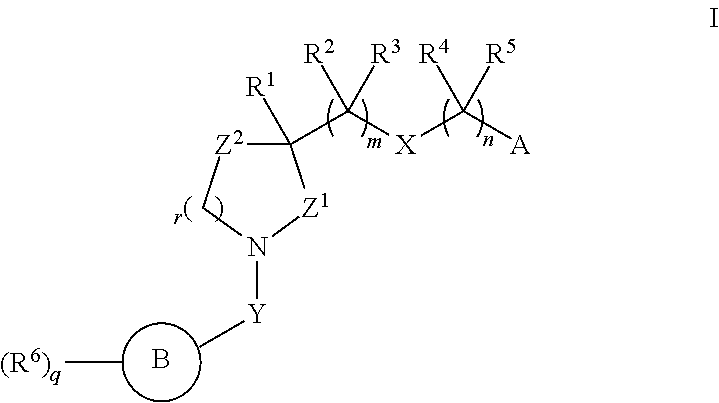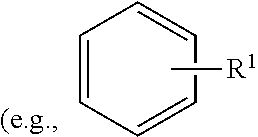Heterocyclic compounds as nav channel inhibitors and uses thereof
a technology of nav channel inhibitors and heterocyclic compounds, which is applied in the field of heterocyclic compounds, can solve the problems of increased injury, and reduced availability of atp
- Summary
- Abstract
- Description
- Claims
- Application Information
AI Technical Summary
Benefits of technology
Problems solved by technology
Method used
Image
Examples
example 1
1-(3-p-Tolyloxy-benzyl)-pyrrolidine-3-carboxylic acid (pyridin-2-ylmethyl)-amide (1)
[0327]
[0328]Pyrrolidine-3-carboxylic acid (pyridin-2-ylmethyl)-amide hydrochloride (Intermediate 2, 75.00 mg; 0.30 mmol; 1.00 eq.), MeOH (1.13 ml; 15.00 V) and triethylamine (0.04 ml; 0.33 mmol; 1.10 eq.) were dissolved in acetic acid (0.04 g; 0.61 mmol; 2.00 eq.), and THF (1.13 ml; 15.00 V) and 3-p-Tolyloxy-benzaldehyde (81.52 mg; 0.36 mmol; 1.20 eq.) were added. The reaction mixture was stirred for 2 h at room temperature. The reaction mixture was cooled to 0° C., sodiumcyanoborohydride (30.17 mg; 0.46 mmol; 1.50 eq.) was added and the reaction mixture was stirred for 12 h at room temperature. The solvent was removed under reduced pressure, the resulting residue was dissolved in dichloromethane, and washed with water (2×3 mL), then saturated brine solution. The combined organic layer was dried over anhydrous sodium sulphate and evaporated under reduced pressure to provide the crude product. Purific...
example 2
1-(3-Isobutylsulfanyl-benzyl)-pyrrolidine-3-carboxylic acid pyridin-2-ylmethyl ester (46)
[0330]
[0331]1-Chloromethyl-3-isobutylsulfanyl-benzene (Intermediate 12, 0.23 g, 1.09 mmol) was taken in dry DMF (10 mL) and potassium carbonate (0.45 g, 3017 mmol), and Pyrrolidine-3-carboxylic acid (pyridin-2-ylmethyl)-amide hydrochloride (Intermediate 1, 0.31 g, 1.31 mmol) were added, and the reaction mixture was stirred at room temperature for 12 h. The reaction mixture was filtered through celite and concentrated under reduced pressure to provide the crude product which was purified by column chromatography (pet ether / ethyl acetate 20%). Yield: 15% (65 mg, colorless liquid); 1H NMR: 400 MHz, (DMSO-d6): δ 8.40-8.48 (m, 2H), 7.71-7.75 (m, 1H), 7.08-7.25 (m, 6H), 4.33 (d, J=5.88 Hz, 2H), 3.53 (s, 2H), 2.39-2.95 (m, 7H), 1.73-1.96 (m, 3H), 0.96 (d, J=6.64 Hz, 6H).
[0332]The following compounds were synthesized according to the procedure in Example 2 from the starting materials indicated in the ta...
example 3
2-{3-[1-(3-Isobutoxy-benzyl)-pyrrolidin-3-yl]-[1,2,4]oxadiazol-5-yl}-pyridine (48)
[0333]
[0334]N-Hydroxy-1-(3-isobutoxy-benzyl)-pyrrolidine-3-carboxamidine (Intermediate 26, 0.2 g, 0.69 mmol) was taken in dry THF (3 mL) and to this was added picolinic acid (0.1 g, 0.83 mmol), triethyl amine (0.29 mL, 2.07 mmol) and 50% solution of T3P in ethyl acetate (0.64 mL, 1.03 mmol). The reaction mixture was heated to reflux at 10 h. The reaction mixture was cooled to room temperature and treated with 10% aqueous solution of sodium bicarbonate, and extracted with ethyl acetate. The organic layer was washed with brine and dried over anhydrous sodium sulphate to get the crude material, which was purified by column chromatography (pet ether / ethyl acetate 20%) to provide the titled compound as a colorless gummy solid (12%, 33 mg). 1H NMR: (DMSO-d6): δ 8.80 (s, 1H), 8.22 (d, J=7.88 Hz, 1H), 8.07-8.09 (m, 1H), 7.68-7.71 (m, 1H), 7.20 (t, J=8.00 Hz, 1H), 6.87 (t, J=7.16 Hz, 2H), 6.68-6.78 (m, 1H), 3.5...
PUM
| Property | Measurement | Unit |
|---|---|---|
| temperature | aaaaa | aaaaa |
| temperature | aaaaa | aaaaa |
| temperature | aaaaa | aaaaa |
Abstract
Description
Claims
Application Information
 Login to View More
Login to View More - R&D
- Intellectual Property
- Life Sciences
- Materials
- Tech Scout
- Unparalleled Data Quality
- Higher Quality Content
- 60% Fewer Hallucinations
Browse by: Latest US Patents, China's latest patents, Technical Efficacy Thesaurus, Application Domain, Technology Topic, Popular Technical Reports.
© 2025 PatSnap. All rights reserved.Legal|Privacy policy|Modern Slavery Act Transparency Statement|Sitemap|About US| Contact US: help@patsnap.com



